Mixed fortunes for Fylde coast fire stations in overhaul which will affect firefighter numbers and response times
and live on Freeview channel 276
The on-call system in operation at the St. Andrew’s Road North facility is set to be revamped after a Lancashire-wide shake-up of shift arrangements was given the go-ahead by councillors on the county’s combined fire authority.
Lancashire Fire and Rescue Service (LFRS) says that its own “robust” standards for how quickly engines arrive at incidents in the area will continue to be met after the implementation of its emergency cover review.
Advertisement
Hide AdAdvertisement
Hide AdThat overhaul will boost the total number firefighters across the county by eight, but see reductions in crewing levels at 13 stations, including St. Annes, South Shore and Bispham, and significant increases at three others – including Fleetwood - according to the shift system they operate.
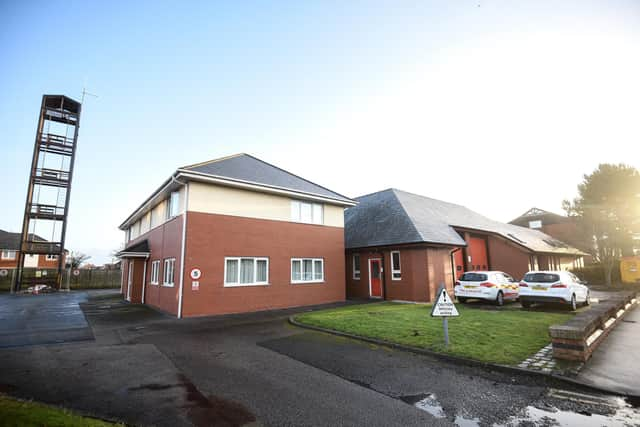

The impact of the changes, which are set to be phased in across the next three years, has sparked a war of words between the Fire Brigades Union (FBU) and LFRS - with the former claiming that some of the plans will result in a loss of fire cover.
The St. Annes facility currently operates a shift pattern known as “day crewing plus” (DCP), meaning that it is staffed by full-time firefighters who - when on duty - are present at the station during the day and then remain on-call throughout the evening and overnight, staying in purpose-built accommodation on the site.
Under the changes, it will move to a “flexible day crewing” (FDC) arrangement, whereby firefighters on shift operate from the station within daytime hours and then go on-call from their own homes at night, a move which the brigade says will improve their work-life balance. However, they are required to live within five minutes of the station in order to minimise the impact of the system on response times.
Advertisement
Hide AdAdvertisement
Hide AdOn average, it takes 1 minute 46 seconds for an appliance to leave a DCP-staffed station after being alerted to a night-time emergency. For FDC facilities, that timeframe rises to 4 minutes 33 seconds - an average increase of 2 minutes and 47 seconds.
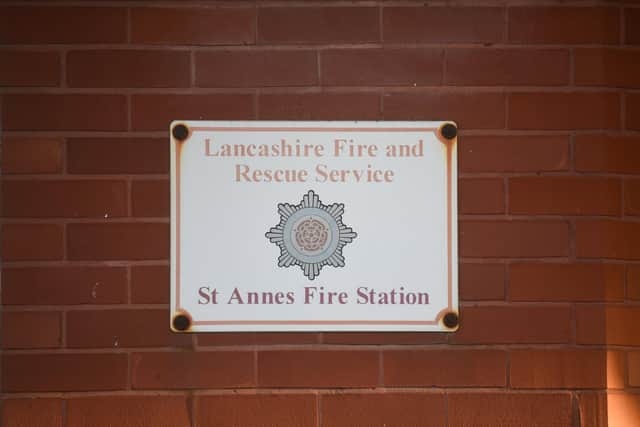

The peak time for fire brigade callouts in Lancashire is between 4.30pm and 5.30pm - with the majority of all incidents attended by St. Annes’s DCP engine occurring between 8am and 8pm.
The fire service stresses that the FDC set-up - which is already in operation at four other Lancashire fire stations - would still enable the county’s fire service to achieve the required response times for St. Annes.
The majority of the area served by the station has been assessed - based on demographic and other data - as being of low risk, for which the county’s fire service pledges a response standard of 12 minutes. While part of town is deemed medium risk - requiring a response within 10 minutes - there are no higher risk areas.
Advertisement
Hide AdAdvertisement
Hide AdThe wider review will not result in any reduction in Lancashire’s 58 fire engines and 39 stations, but Penwortham fire station - like St. Annes - will shift to a flexible day crewing arrangement.
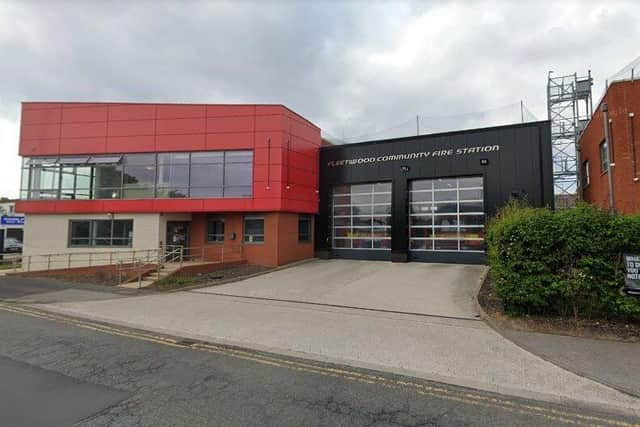

A meeting of South Ribble Borough Council’s scrutiny committee back in October heard that the pair had been selected for the change because they were among the “lower-level activity stations” in the county.
Fire service area manager Tony Crook said that the move amounted to a change in the “distribution of resources” across Lancashire and would contribute to the savings that enabled an overall increase in staffing for the county.
Meanwhile, in the wake of feedback received during a three-month consultation unto the emergency cover review, a further review specifically of the Blackpool area has now been recommended.
Advertisement
Hide AdAdvertisement
Hide AdIn a statement issued to The Gazette after the fire authority approved the latest proposals, Steve Healey said: “We have reviewed the locations, numbers and types of fire stations and fire appliances against community risks and incident levels across the county - and the proposals reflect the most effective and efficient ways to provide emergency cover for the whole of Lancashire.
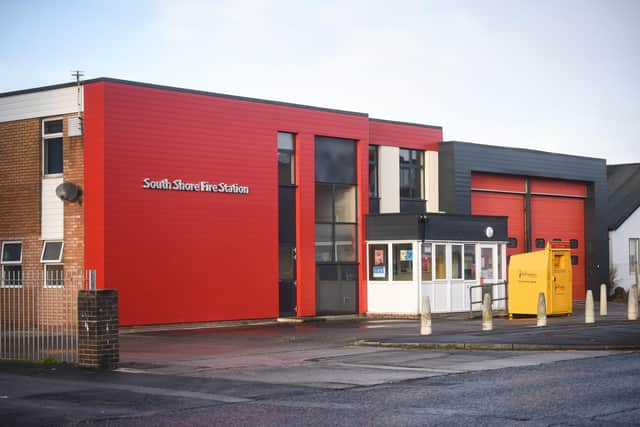

“We are maintaining all 39 fire stations and 58 fire appliances across the county, meeting our response standards, and creating additional firefighter jobs. We are also strengthening the service’s capabilities in relation to climate change emergencies, and high-rise and commercial building fires.
“In St. Annes, the proposed changes to emergency cover align with risk and incident levels in the area. The [two fire engines remain] there and we will continue to meet the required response standards when people call us out.
“Changes to crewing arrangements at some stations are necessary where the shift system is not supported by the Fire Brigades Union. However, we have worked with our staff to find an alternative that offers greater resilience and flexibility,” Mr Healey added.
UNION TURNS UP THE HEAT ON FIRE CHIEFS
Advertisement
Hide AdAdvertisement
Hide AdThe Lancashire brigade insists that the station crewing changes to be implemented as part of its emergency cover review will have just a 0.1 percent impact on its county-wide response performance.
However, that figure was disputed by the Fire Brigades Union in a letter sent to the combined fire authority the evening before a crunch meeting just before Christmas at which members approved the raft of proposals.
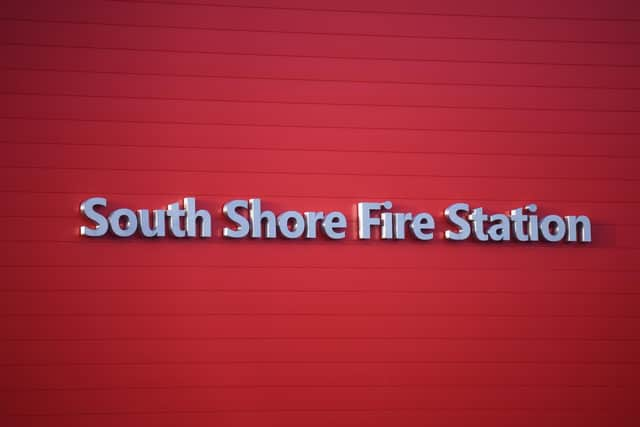

The review had originally suggested adding 25 firefighters to the Lancashire rollcall, requiring an extra £215,000 of investment. But in the context of what LFRS described as a “shifting financial position”, it revised its plans so that they now generate savings of around £400,000.
Nevertheless, the fire service says that the new arrangements “are not a cost-cutting exercise” and are designed to ensure “an effective and efficient response to fires and other emergencies at all times”.
Advertisement
Hide AdAdvertisement
Hide AdBut in the FBU letter, seen by The Gazette, the union warns that the shift to flexible day crewing in St. Annes and Penwortham amounts to a loss of “night-time fire cover” in those areas - and adds that it does not “recognise nor concur” with the assumption of a 0.1 percent impact as a result of the overall package of measures.
These include upgrades to three of the current 11 DCP stations - in Fleetwood, which has some high-risk fire areas, as well as Morecambe and Skelmersdale – which will all move to “wholetime” operations, with the number of firefighters based at each rising from 14 to 24. Bispham had also originally been in line for that boost, but was dropped from the final proposals.
However, there will be reductions in the total number of firefighters from 28 to 24 at three wholetime fire stations - South Shore, Lancaster and Hyndburn - which will move to a new flexible wholetime arrangement under which staff are able to self-roster their shifts to give them maximum control over their working hours, if that change can be agreed with the unions. The staffing decrease will be implemented regardless of whether the flexi arrangement is implemented or not.
Firefighter numbers will fall from 14 to 13 at four of the six remaining day crewing plus stations, including Bispham.
Advertisement
Hide AdAdvertisement
Hide AdThere will also be a drop from 14 to 13 at the four existing flexible day crewing stations, in addition to St. Annes and Penwortham when they move to that system in 2025/26.
LFRS says that the changes to its staffing establishments are “in line” with those adopted by many other brigades nationwide.
But the FBU’s letter declared that there was “no definition of resilience or flexibility [that] these proposals comply with” - and also warned of the negative impact of having six firefighters per watch at some four-watch stations and the potential to have to use overtime to cover staffing shortfalls as a result of leave or sickness.
However, deputy chief fire officer Steve Healey told the fire authority that he found the last-minute correspondence “disappointing” and claimed that it contained “a number of inaccuracies” - most notably, he said, the assertion that the emergency cover review involved “job losses”.
Advertisement
Hide AdAdvertisement
Hide Ad“I’m at a loss as to where that has come from,” Mr. Healey said, contending that it was “quite an achievement” to increase the firefighter staffing establishment within the changes that the fire authority was being asked to approve.
He added that while the FBU contested the 0.1 percent impact of the proposals, they had not “[come] up with any alternative view on what they feel that the changes look like”.
“Our data has been externally analysed by a third party company that looked at tens of thousands of incidents over years of data and the fact remains that the proposals…do not have a significant impact on emergency cover at all,” Mr. Healey said.
Fire authority chair - Conservative county councillor David O’Toole - said that people would “make their own conclusions about the [FBU’s] letter”, but described the emergency cover review as “extremely thorough” - and the best he had seen during his time on the authority.
Advertisement
Hide AdAdvertisement
Hide AdLabour fire authority member County Cllr Nikki Hennessy said that it would have been preferable to receive the letter “a couple of weeks ago”.
She added that fellow Labour members would have been unable to vote “for any loss of fire station[s] or appliances or job losses”, but that it was up to the service itself to decide on duty systems and how to make them work.
The authority was warned that it may be necessary to revisit some of the proposals depending on the final funding settlement for the service which was received in the days after the fire authority meeting.
The service is also planning to bolster its ability to respond to climate change-related incidents – like flooding and wildfires – with the purchase of four new off-road appliances. It had already agreed to buy a new 45-metre aeriel ladder platform – the tallest outside London – and two additional water tower appliances to help tackle high-rise and commercial fires.
Advertisement
Hide AdAdvertisement
Hide AdIn addition, the brigade intends to broaden the skills of its on-call firefighters who crew 32 of Lancashire’s 58 appliances.
WHAT DOES IT MEAN FOR FIREFIGHTERS?
Firefighters at day crewing plus facilities receive a 32 percent additional allowance - equating to an average of almost £11,000 - to compensate them for the fact that their shifts involve remaining on “close standby” during the evening and overnight, having worked throughout the day. That pensionable payment will be partially lost for those moving to the FDC system – as in St. Annes - and surrendered totally for any personnel whose stations become staffed on a wholetime rota, like Fleetwood.
As a result of what the brigade describes as the “perceived challenges around [the] affordability and availability of housing” within a five-minute radius of the St. Annes and Penwortham fire stations, it has agreed to consult further with staff and trade unions about how it will introduce the on-call element of the new arrangements.
The options are to stick to the original plan of flexible day crewing or to implement a day crewing only system, with evenings and overnight periods being covered by other on-call firefighters.
Advertisement
Hide AdAdvertisement
Hide AdThe final decision will be agreed between County Cllr O’Toole and chief fire officer Justin Johnston, who said that he expected to “be able to accommodate most people’s wishes…whilst delivering the best service that we can to the public”.
The day crewing plus system was first introduced in Lancashire in 2010 as a way of maintaining emergency cover levels while making major financial savings as austerity started to bite into public sector budgets. It required fewer personnel to deliver the same level of round-the-clock response - with a DCP-crewed fire engine costing around £880,000 a year to run, compared to £1.34m for one operated on a wholetime basis.
Firefighters had to volunteer to opt-out of European Union-devised rules governing the maximum number of hours they could work in a week if they wanted to move to a DCP shift pattern.
The FBU does not support the system, although the Lancashire fire service says that it came to an agreement with local union officials over the issue 12 years ago - a claim which the FBU denies.
Advertisement
Hide AdAdvertisement
Hide AdOf the 37 staff on DCP contracts who responded to the emergency cover consultation, 70 percent disagreed with the proposal to end the arrangement at St. Annes station.
The brigade says that DCP crewing can reduce the capacity for fire prevention work in the community because of the need to provide firefighters with “recovery time” the day after being called out to any overnight incidents, so as to reduce fatigue.
THE MINUTES THAT MATTER
Lancashire Fire and Rescue Service sets response standards for small geographical areas across the county - containing between 1,000 and 3,000 people - based on the probability of an incident occurring in those locations and the consequences if it does.
These determine the maximum time it should take from the call reporting an incident to the arrival of the first appliance at the scene:
Low risk - 12 minutes
Medium risk - 10 minutes
High risk - 8 minutes
Very high risk - 6 minutes
Advertisement
Hide AdAdvertisement
Hide AdNon-fire in incidents where there is a risk to life (such as road accidents and water rescues) - 13 minutes
The vast majority of Lancashire is deemed to be of low risk and overall fire risk in the county has reduced by 23 percent in the last 15 years.
Source: Lancashire Fire and Rescue Service